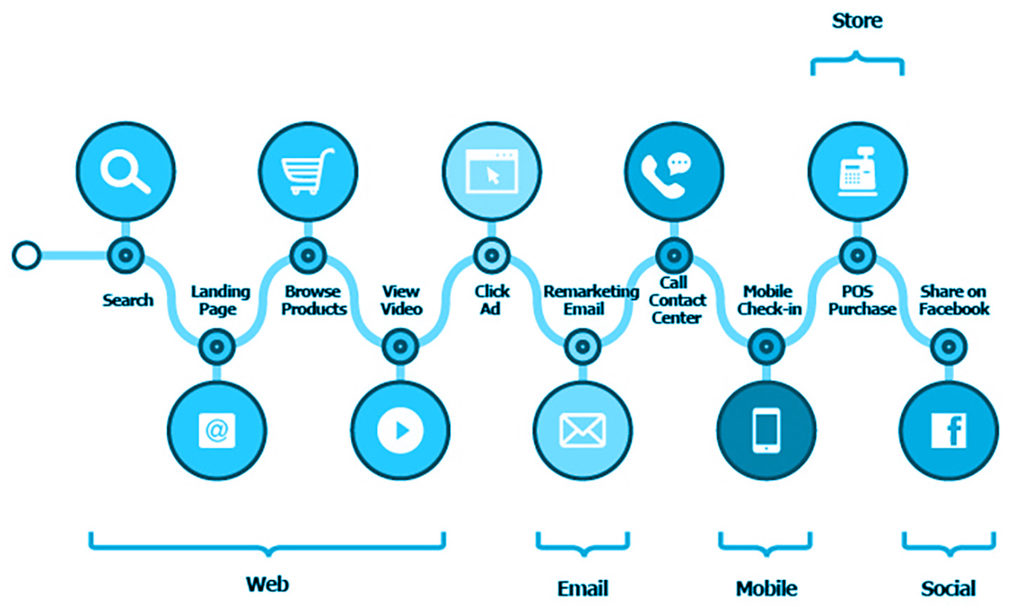
How to Use an Omnichannel Strategy for Your Retail Brand
Why an omnichannel strategy is more important than ever?
Several years ago, when we first started stressing the importance of an omnichannel strategy for retail, we cited the number of owned connected devices per consumer as good reason for paying attention.
At the time, the average digital consumer owned 3.64 connected devices. Today, the average American has ready access to 10 connected devices. That’s about a 3x increase in less than five years, and it’s a number that will continue to grow with the expansion of 5G and improved processor speeds.
Of course, consumers don’t want to be bombarded by a retailers messaging on every device they own or in every channel they’re active on. Therefore, retail marketers must take employ a tactful omnichannel strategy that ensures they’re maintaining coordinated, continuous engagement with consumers. Engagement that takes place in the right place, at the right time, and in the right context—always.

How retailers benefit from an omnichannel strategy?
Building an omnichannel strategy is a big advantage for anyone in retail. Whether you do most of your selling online or offline, the modern consumer views your brand as a unified entity. That means they expect the same experience whether they’re on your website, standing in a store, reading one of your emails, or using your app on their smartphone.
Put another way, your customers want to be able to start their shopping experience on one device and in one channel, and seamlessly finish shopping on another device, in another channel, at another point in time.
Pretend a woman named Ashley is checking her email first thing in the morning while sitting in bed. She sees a promotion from one of her favorite brands—Sephora—advertising a new shade of lipstick. Excited by the offer, Ashley opens the email and clicks on the promotion, but before she can make a purchase, she starts getting ready for work.
Several hours later, Ashely is at the office absorbed in work. She’s forgotten all about the promo until she sees a push notification on her phone from the Sephora app. Reminded of her interest in the lipstick, Ashely unlocks her phone, opens the app, and completes her purchase in less than 90 seconds
Extremely rudimentary as it is, the above is nevertheless an apt example of how retailers can benefit from investing in an omnichannel strategy and omnichannel technology.
Contextual view of the customer journey
For brands, understanding the behaviors of offline customers as well as behaviors of offline customers that transition to online is essential. Bridging this gap and effectively mapping the customer journey used to require surveys or collecting an email address in-store or the conduction of costly consumer research. But this is no longer the case. Now leading omnichannel technology providers can help retailers obtain a contextual view of the customer journey simply by studying signal data with AI.
A unified view of the customer journey also tells retailers which parts of their omnichannel strategy are strongest versus weakest. This makes it easier for retail marketers to examine and optimize their strategy.

Omnichannel marketing leads to more efficiency and effectiveness
Here’s why Omnichannel delivers more efficiency and effectiveness…
- It gives prospects, existing customers, and lapsed customers the personalized, individualized experience they expect.
- It allows marketers to make more compelling offers that are delivered in the right place (device and channel), at the right time (context).
- It puts more control in the hands of retail marketers, and makes it easier to measure the true impact of their campaigns on the bottom line.
- It makes it easer for marketers to how each individual consumer interacts with a given campaign or piece of creative which, analyzed overtime, leads to higher conversion rates.
Looking to learn more about omnichannel?
If you’re interested in learning more about omnichannel, or how you can apply an omnichannel marketing strategy to your retail brand, reach out to Zeta.
